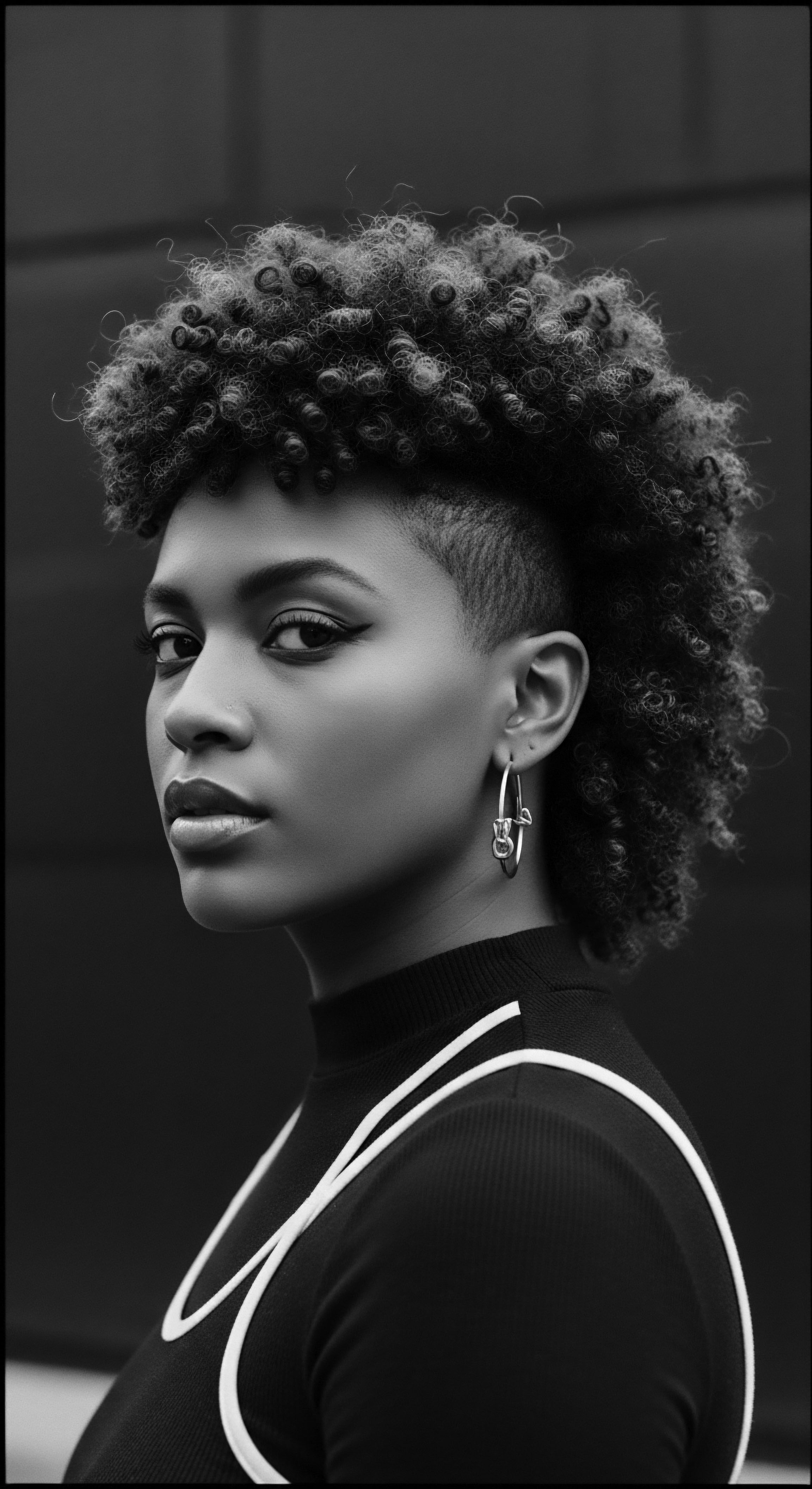
Roots
Consider the story held within each coil, each twist, each strand of textured hair. It whispers of sun-drenched savannas, ancestral wisdom, and the enduring spirit of a people. For those tracing their lineage through the African diaspora, hair has always been more than mere biological filament; it is a living archive, a sacred connection to heritage.
This understanding forms the very core of Roothea’s vision ❉ a profound meditation on the resilience and beauty woven into every aspect of textured hair. Activists, through their deliberate hair choices, transformed this intimate connection into a public declaration, reshaping societal perceptions and reaffirming cultural pride.
From the very beginnings of human communal life, particularly across the African continent, hair styling served as a visual language. It communicated identity, societal roles, spiritual beliefs, and even marital status long before written records became commonplace. Ancient Egyptian hieroglyphs and artifacts bear witness to elaborate braided and adorned styles, indicating status and devotion.
Communities like the Yoruba people of Nigeria crafted intricate hairstyles that signified their communal roles, while Namibia’s Himba tribe used red ochre paste on their dreadlocked styles, reflecting their ties to the earth and their ancestors. These are not simply aesthetic preferences; they are echoes from a source of deep cultural meaning.
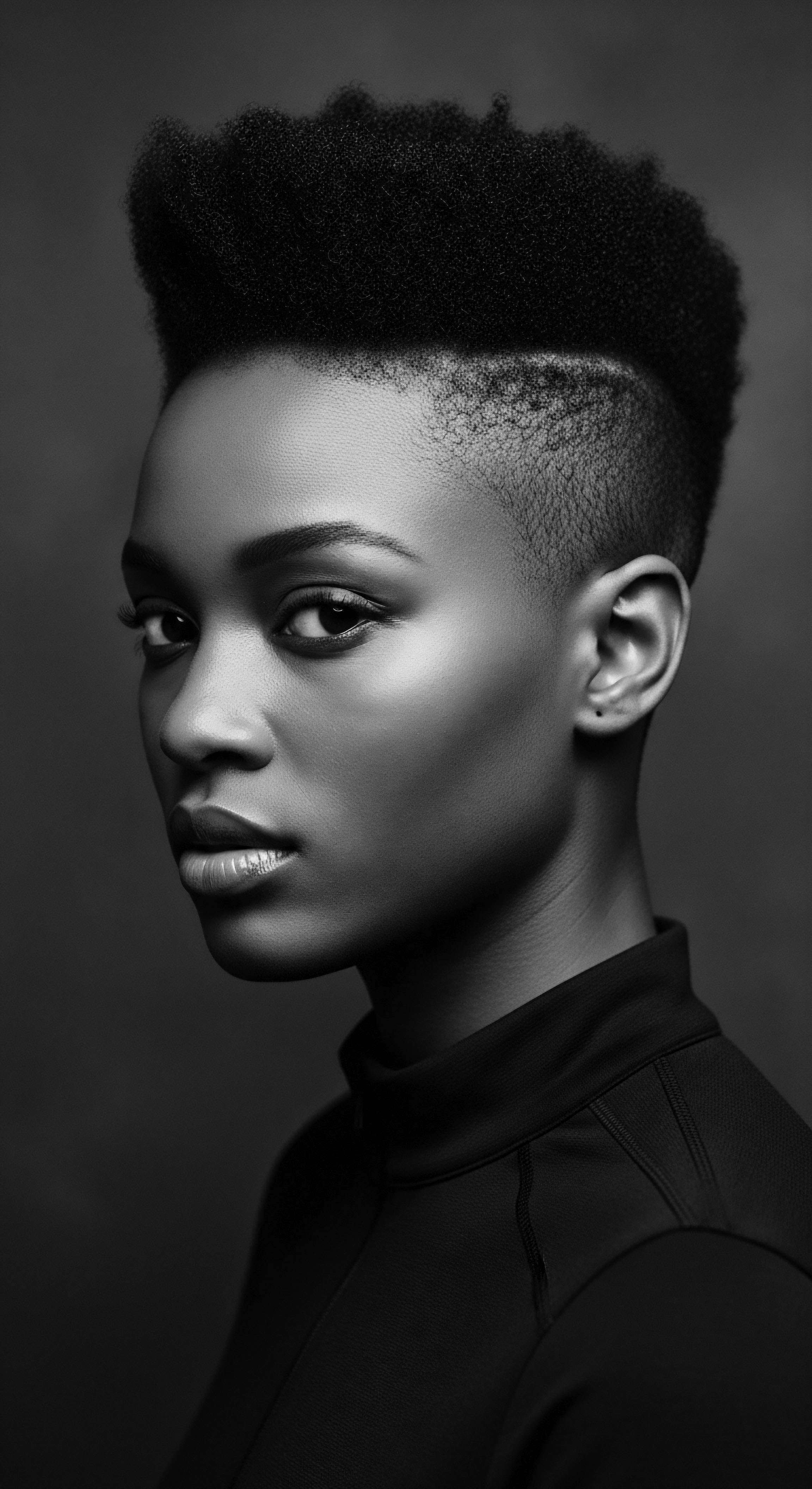
Textured Hair’s Genetic Blueprint
At the heart of Black hair’s unique character lies its specific genetic blueprint. Unlike hair types with more circular follicles that result in straighter strands, textured hair often emerges from elliptical or oval-shaped follicles. This fundamental difference dictates the strand’s tendency to curve and coil, creating the distinct patterns we celebrate.
This tightly coiled structure, believed to have evolved over millennia in sub-Saharan Africa, offered essential protection from the sun’s intense UV rays while allowing airflow to cool the scalp. It represents a beautiful adaptation, a biological marvel crafted by generations of living in harmony with environment.
The science behind these curls reveals that hair with tighter patterns, such as those found in many Afro-textured forms, tends to be more susceptible to dryness. This happens because the natural oils, or sebum, produced by the scalp find it more challenging to travel down the spiraling path of each strand. Understanding this biological reality helps us appreciate the historical ingenuity behind ancestral care practices that prioritized moisture retention, often using natural butters, herbs, and powders. These practices were not just rituals; they were informed, intuitive responses to the hair’s elemental needs, passed down through the generations.

Why Does Textured Hair Shrink so Much?
A common experience for those with textured hair is the phenomenon of shrinkage, where wet hair appears significantly shorter than its true length when stretched. This occurs due to the hair’s natural curl pattern coiling tighter when exposed to water, then relaxing as it dries. From a scientific view, this characteristic is directly related to the elasticity and unique helical structure of the hair strand. Culturally, shrinkage has long been a point of conversation, sometimes viewed as a hindrance, yet increasingly recognized as a sign of healthy, vibrant coils, a testament to the hair’s inherent spring and life force.
Textured hair, a living archive, carries echoes of ancestral wisdom and profound biological adaptation within each intricate coil.
The language we use to describe textured hair itself has a rich heritage. Terms like “kinky,” once weaponized and used pejoratively, are being reclaimed and celebrated as descriptors of the hair’s inherent beauty and strength. The journey of these words mirrors the broader movement of identity reclamation within Black communities. This linguistic redefinition is as vital as the physical acts of wearing natural styles, each contributing to a collective understanding and honor of this unique heritage.

Ritual
The shift from ancestral lands to the Americas during the transatlantic slave trade brought about a brutal disruption of traditional hair practices. Forced into conditions that denied them time, tools, and familiar ingredients, enslaved Africans endured the trauma of having their hair shorn, an act designed to strip away their identity and cultural connection. Yet, even in such brutal circumstances, the spirit of creative resilience persisted.
Simple cornmeal or bacon grease became improvised conditioners, sheep fleece carding tools transformed into combs. This period, marked by immense loss, simultaneously underscored the deep-seated significance of hair as a personal and collective touchstone, something survivors held onto despite desperate odds.
Post-emancipation, the struggle for acceptance continued. Dominant beauty standards, deeply rooted in European aesthetics, cast natural Black hair as unprofessional or unkempt. This led to the rise of pressing combs and chemical relaxers, tools and substances designed to straighten hair textures.
The desire to conform, often driven by economic and social pressures, became a complex part of the hair story. Yet, even as many sought assimilation, the quiet acts of braiding and maintaining traditional styles continued in homes and nascent Black-owned beauty parlors, preserving a continuum of care and community.
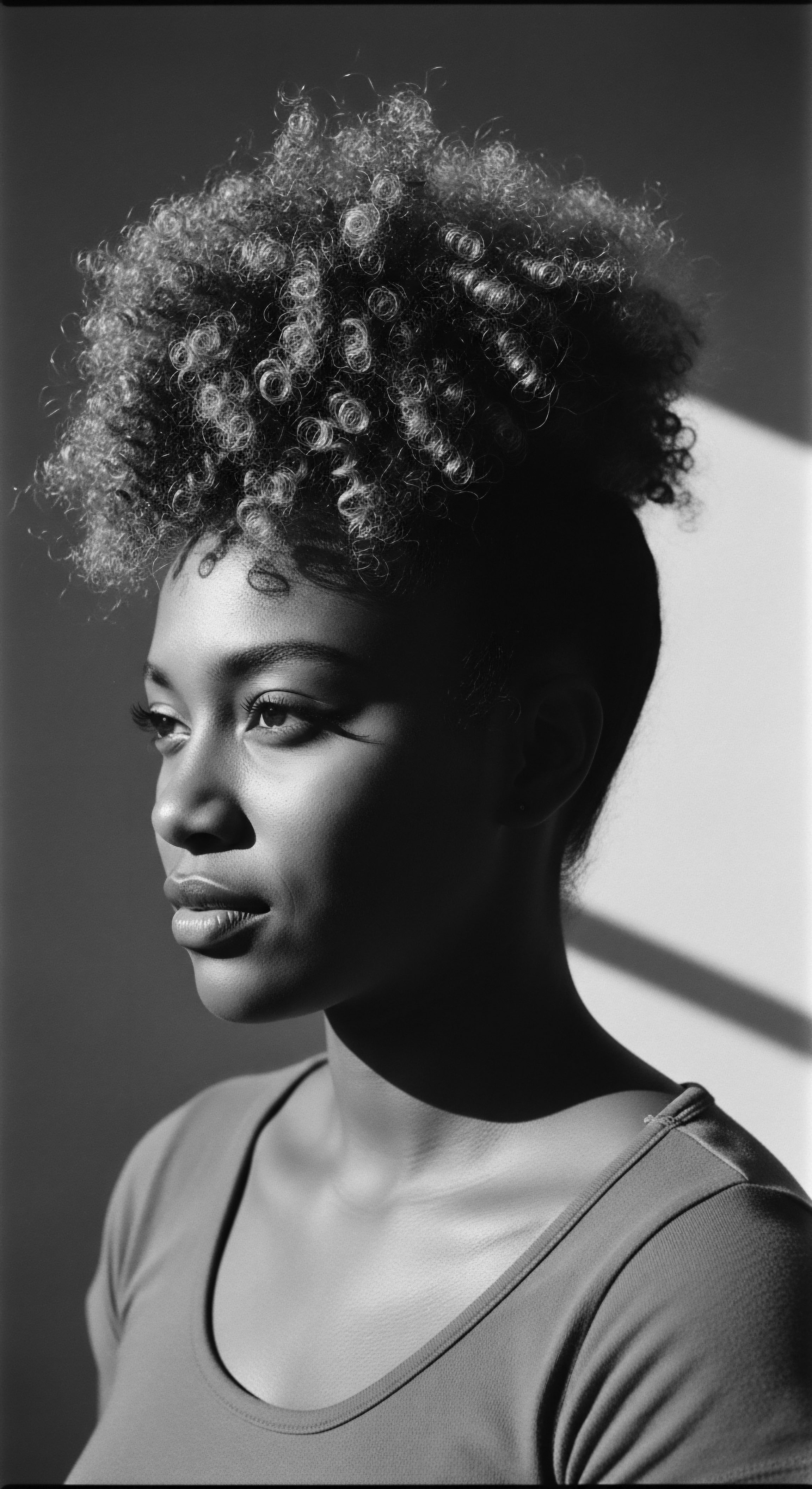
How Did the Afro Become a Symbol of Liberation?
The 1960s marked a powerful turning point, a cultural earthquake that shook the foundations of imposed beauty ideals. The Civil Rights and Black Power movements ignited a fervent call for Black liberation and self-love. Central to this call was the “Black Is Beautiful” ethos, a movement that championed the inherent beauty of Black skin, features, and crucially, natural hair. Activists, artists, and thinkers like Angela Davis, Nina Simone, and members of the Black Panther Party chose to wear the Afro , a grand, spherical crown of unrestrained curls, as an outward sign of their radical self-acceptance and defiance.
The Afro was far more than a hairstyle; it was a political statement, a declaration of solidarity, and a visual rejection of Eurocentric beauty mandates. Lori L. Tharps, a co-author of Hair Story ❉ Untangling the Roots of Black Hair in America, stated that the hair became a “physical manifestation of our rebellion” (Tharps, as cited in Odele Beauty, 2021).
It spoke volumes without uttering a sound, announcing a refusal to manipulate hair to meet the comfort levels of an oppressive society. This embrace of natural texture symbolized a return to African roots, a reclamation of a heritage that had been systematically suppressed.

Styling as Collective Resistance
Beyond the Afro, other traditional styles found renewed prominence. Braids and cornrows, ancient African practices tracing their origins back to 3500 BCE, had been used to signify tribal identity, social status, and even, it is speculated, to convey escape routes during the era of enslavement. In the activist era, these styles, along with dreadlocks, became equally powerful statements. They represented a deliberate choice to reconnect with ancestral practices, to embody a visible link to African heritage, and to assert cultural autonomy.
The Afro’s ascendance during the Black Power movement became a visible, unapologetic statement of identity, linking activists’ choices to ancient heritage.
The act of styling hair itself became a ritual of communal bonding and shared meaning, much as it was in pre-colonial Africa where hair grooming was an intimate activity. In these moments, knowledge of care and technique was passed down, reinforcing social ties and preserving a living heritage. The tools of hair care also held symbolic weight. The Afro pick , often topped with a clenched fist, emerged as a distinct symbol of Black power, tying hair care directly to political ideology.
| Traditional Practice Braiding (e.g. Cornrows) |
| Ancestral Significance Tribal identity, marital status, wealth, communication (maps) |
| Activist Era Symbolism Cultural reconnection, resilience, collective identity, anti-assimilation |
| Traditional Practice Afro Style |
| Ancestral Significance Natural hair form, often suppressed under slavery |
| Activist Era Symbolism Black pride, self-acceptance, rejection of Eurocentric norms, political defiance |
| Traditional Practice Dreadlocks |
| Ancestral Significance Spiritual connection, strength, higher power (Akan people) |
| Activist Era Symbolism Liberation, rebellion against mainstream, connection to Africa, Rastafarian identity |
| Traditional Practice These varied hair choices represent a powerful continuum of Black heritage, adapted and expressed through resistance. |
The legal landscape, too, reflected the societal tension around Black hair. While the Civil Rights Act aimed for equal access, it initially did not foresee the need for hair protection. Early discrimination cases, such as the 1976 Jenkins v. Blue Cross Mutual Hospital Insurance case, saw courts uphold the right to wear Afros under Title VII.
Yet, later cases, like the 1981 American Airlines ruling against braids, demonstrated the ongoing struggle, with courts sometimes deeming braids as non-immutable characteristics. This legal battle further highlighted how deeply hair choices were intertwined with freedom and personal dignity.
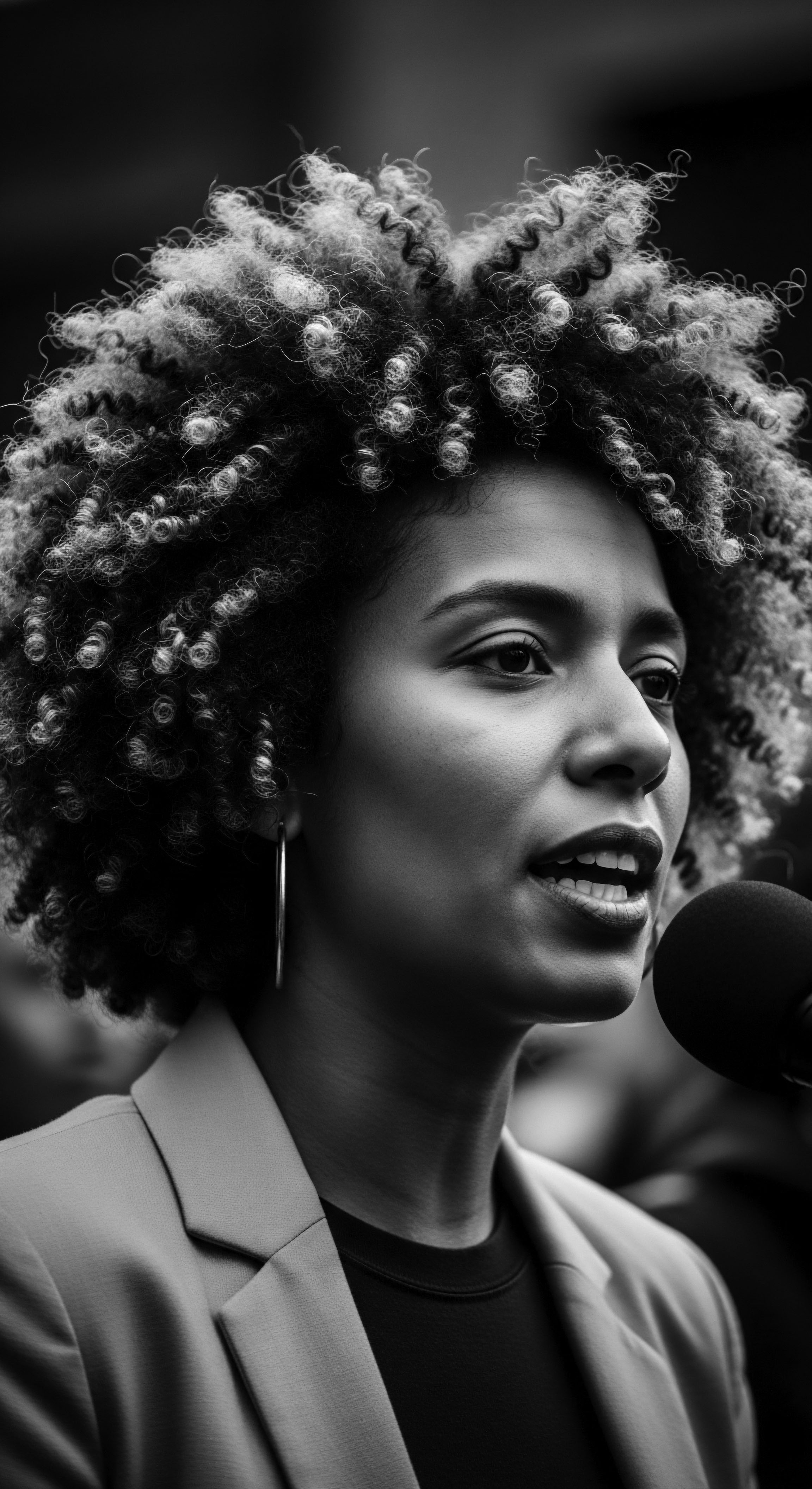
Relay
The echoes of activist hair choices from the mid-20th century reverberate through contemporary Black and mixed-race experiences, serving as a constant testament to the enduring politics of Black beauty. The fight for the freedom to wear one’s hair in its natural state, without professional or social penalty, continues to shape daily life. This struggle is not merely about aesthetic preference; it addresses the deeply embedded historical biases that have long marginalized textured hair and its inherent beauty. The conscious decision by activists to wear their natural crowns was a profound statement, challenging a centuries-old imposition of Eurocentric ideals and redirecting the gaze inward, towards ancestral beauty.
The significance extends beyond individual appearance; it encompasses economic justice and systemic change. The legal challenges against hair discrimination, culminating in legislative efforts like the CROWN Act, exemplify how the legacy of activist hair choices continues to drive policy. A 2019 study by Dove revealed that 80 percent of Black women felt a compulsion to alter their hairstyles to align with “conservative” workplace standards, underscoring the persistent pressure to conform.
This data point is a stark reminder that even decades after the “Black Is Beautiful” movement, the battle for hair autonomy remains active. The hair chosen by activists was not just a style; it was a demand for recognition and respect for inherent racial characteristics.

How Do Hair Choices Impact Black Women’s Identities?
The choice of hair, particularly for Black women, is inextricably tied to identity. It can be a process of self-discovery, a connection to lineage, or a means of expressing belonging. Emma Dabiri, in Twisted ❉ The Tangled History of Black Hair Culture, explores how hair has, at times, been a more potent categorizer of racial identity than complexion itself.
(Dabiri, 2020) This observation underscores the intimate, often burdening, yet ultimately powerful relationship Black individuals hold with their hair. Activists, by choosing natural styles, asserted a defiant self-definition, allowing their hair to communicate a legacy of strength and authenticity.
The “Natural Hair Movement” of the early 2000s, propelled by digital spaces and online communities, marked a new wave of this reclamation. Social media platforms provided a vital space for Black women to exchange hair care practices, share tutorials, and discuss their experiences, often learning to tend to their natural coils for the first time. This communal sharing echoed the ancient African tradition of hair styling as a social ritual, where bonds were forged, and knowledge was passed down through generations. The modern movement, therefore, stands as a technological extension of a timeless ancestral practice, furthering the reach of heritage through digital means.
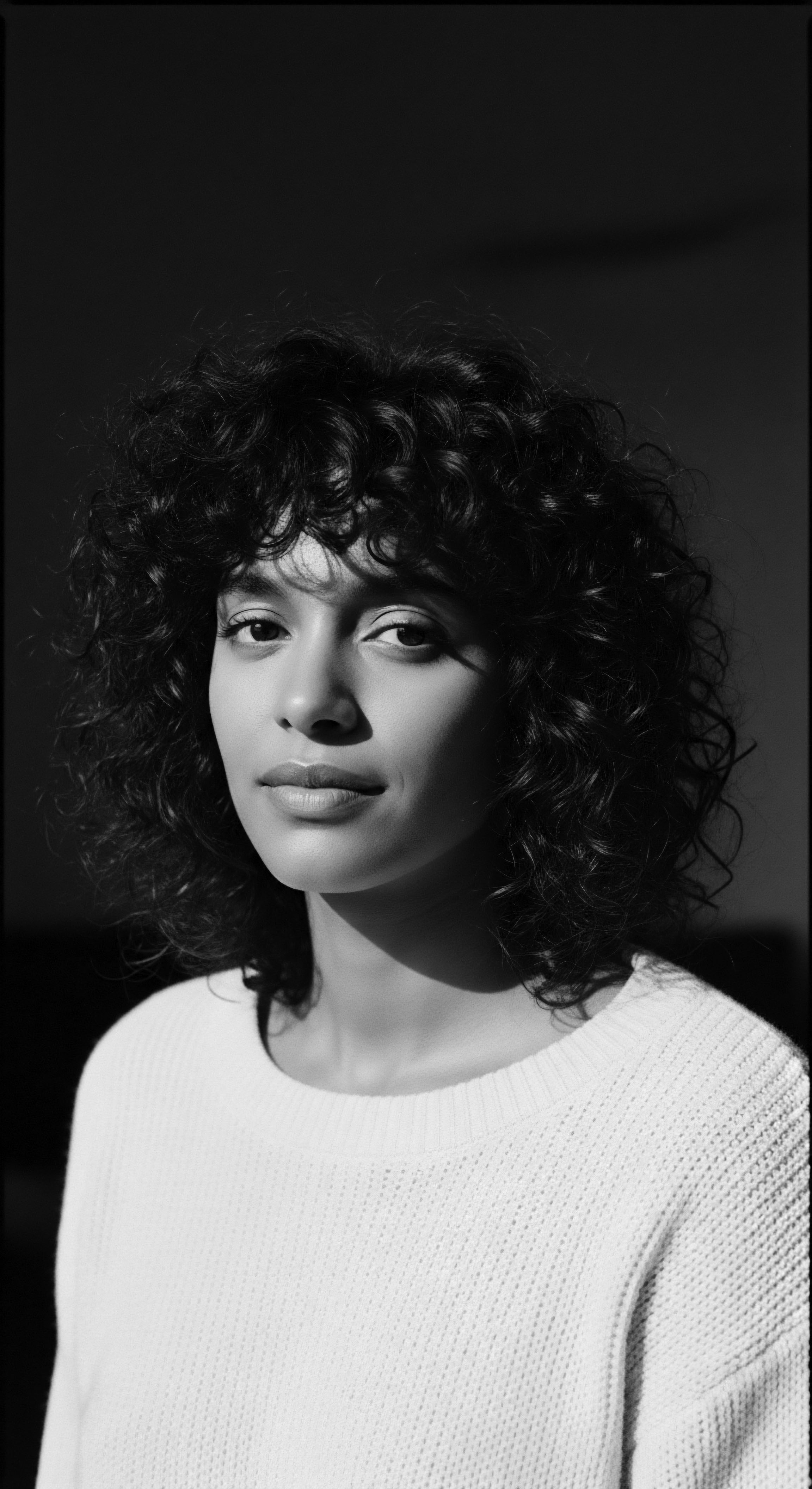
What Is the Scientific Foundation of Textured Hair Resilience?
The resilience of textured hair, so often misunderstood, rests upon its unique biological makeup. While its coiled structure can make it prone to dryness and breakage if mishandled, it also grants it an inherent elasticity and volume unmatched by other hair types. The hair follicle’s elliptical shape and the sharper angle at which it emerges from the scalp contribute to this distinctive curl pattern. This structure, while requiring specific care, is a testament to the hair’s remarkable ability to withstand diverse environmental conditions, a characteristic honed over centuries.
Understanding this scientific foundation deepens our appreciation for the intentional care strategies developed within Black communities throughout history. These traditions, now often validated by modern trichology, speak to an intuitive understanding of the hair’s needs.
- Melanin Distribution ❉ The concentration of eumelanin, the pigment responsible for darker hair colors, is higher in Black hair, providing natural protection against UV radiation. This biological aspect connects directly to the environmental conditions in which textured hair historically evolved.
- Follicle Shape ❉ The elongated, oval-shaped follicles of textured hair result in strands that grow in a spiral, contributing to its distinct coil patterns and volume. This shape influences how oils traverse the strand, which in turn affects moisture retention.
- Growth Angle ❉ Textured hair often emerges from the scalp at a sharper angle, creating lift and volume, which also contributes to its protective qualities against sun exposure. This growth pattern, combined with the curl, helps create an insulating layer.
The choice to wear styles like Afros or locs became a direct challenge to the notion that only straight hair could be perceived as “professional” or “beautiful.” This defiance was particularly resonant in fields such as education and employment, where policies often restricted natural styles. Cases like those of Ruby Williams, who was repeatedly sent home from school for her Afro, illustrate the tangible impact of these discriminatory practices. The activists’ hair choices were not just a fashion statement; they were a direct confrontation with systemic injustice, asserting a fundamental right to corporeal autonomy and cultural expression within the public sphere.
This ongoing struggle highlights the intergenerational transmission of both the trauma of discrimination and the triumph of resistance. The legacy of activists, in their deliberate choices to wear their hair as it naturally grows, continues to inform and shape the present-day discourse around Black hair. It prompts a critical examination of beauty standards, a celebration of inherited forms, and a relentless push for a world where textured hair is universally recognized as a source of pride, not prejudice. The hair, in its myriad forms, remains a powerful conduit for ancestral memory and a living declaration of cultural sovereignty.

Reflection
As we consider the journey of textured hair, particularly through the deliberate choices of activists, it becomes clear that each coil, each braid, each crown tells a story reaching far beyond mere aesthetics. It is a story of survival against profound dehumanization, a testament to resilience in the face of relentless pressure to conform, and a jubilant declaration of self-acceptance. The hair, so often policed and pathologized, transformed into a potent symbol of Black heritage, a visible manifesto of identity and liberation. This profound connection is what Roothea understands as the Soul of a Strand ❉ an intrinsic link between our physical being and the deep currents of ancestral memory.
From the intricate designs of ancient African coiffures, signaling status and spiritual connection, to the bold Afros of the Black Power movement, asserting a defiant pride, and the contemporary celebration of natural textures in their diverse glory, hair has been a consistent marker of identity. It has served as a silent, yet powerful, language that speaks of origins, struggles, and triumphs. The activists, by choosing to wear their heritage openly, etched their convictions into the very fabric of public consciousness, reminding us that true beauty flows from authenticity and a reverence for one’s roots.
This enduring legacy reminds us that caring for textured hair is more than a routine; it is an act of honoring history, nurturing a profound connection to ancestry, and affirming a living heritage. It is a continuous conversation with the past, an active engagement with the present, and a hopeful declaration for the future, ensuring that the wisdom of the strands continues to guide and inspire.

References
- Byrd, A. & Tharps, L. L. (2001). Hair Story ❉ Untangling the Roots of Black Hair in America. St. Martin’s Press.
- Dabiri, E. (2020). Twisted ❉ The Tangled History of Black Hair Culture. Harper Perennial.
- Johnson, K. A. & Bankhead, A. (2014). Black Hair and Hair Texture ❉ Cultivating Diversity and Inclusion for Black Women in Higher Education. Emerald Publishing.
- Owens Patton, T. (2006). Hey Girl, Am I More Than My Hair? ❉ African American Women and Their Struggles with Beauty, Body Image, and Hair. NWSA Journal, 18(2), 24-51.
- Randle, B. A. (2015). I Am Not My Hair ❉ African American Women and Their Struggles with Embracing Natural Hair! Race, Gender & Class, 22(1-2), 114-121.
